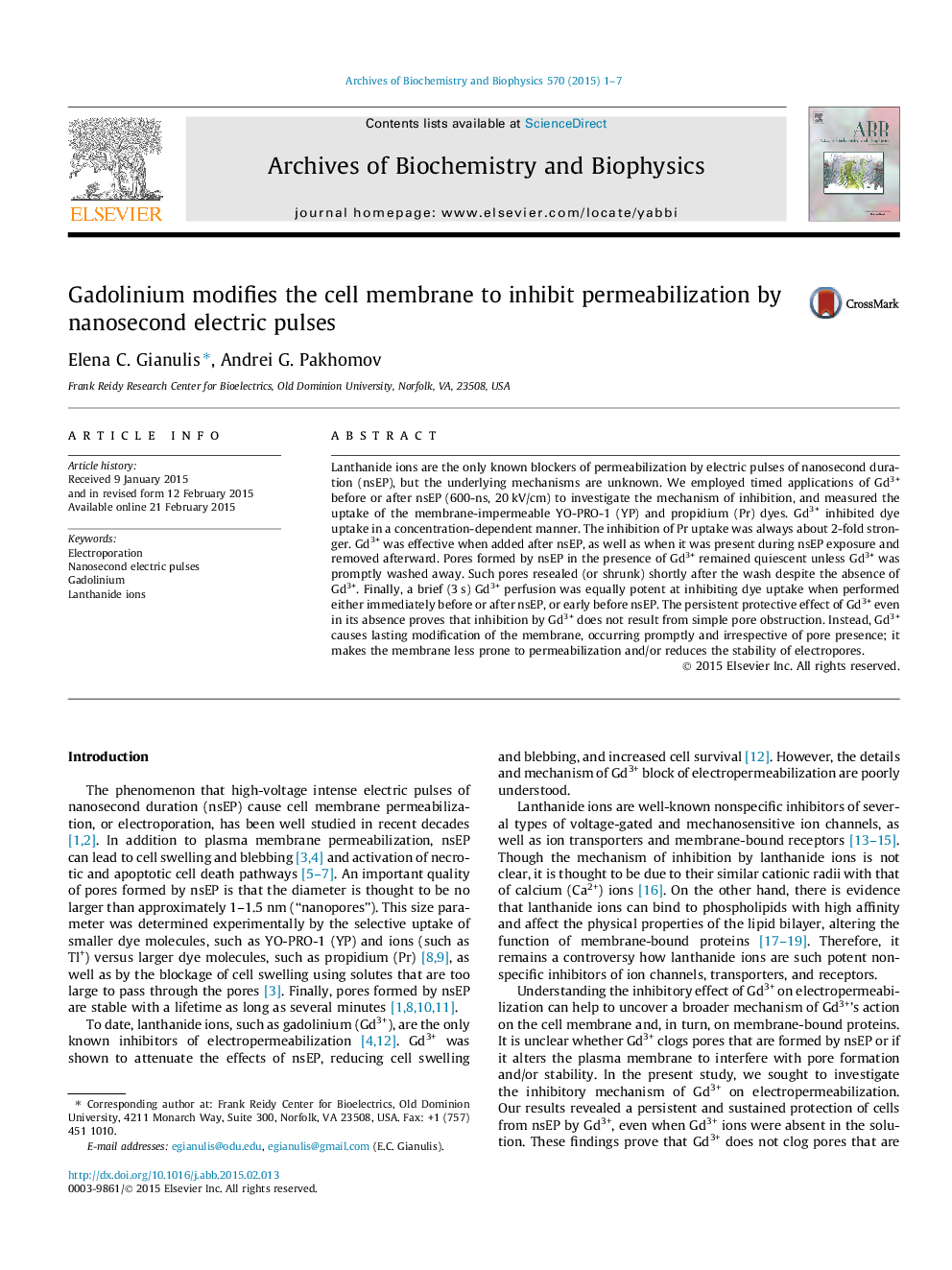| Article ID | Journal | Published Year | Pages | File Type |
|---|---|---|---|---|
| 1925047 | Archives of Biochemistry and Biophysics | 2015 | 7 Pages |
•Gd3+ causes a lasting modification of the cell membrane to inhibit electroporation.•Gd3+ does not clog electropores.•Modification by Gd3+ occurs promptly and independently of electropore presence.•Gd3+ makes the plasma membrane less prone to electropermeabilization.•Gd3+ reduces the size and/or lifetime of formed electropores.
Lanthanide ions are the only known blockers of permeabilization by electric pulses of nanosecond duration (nsEP), but the underlying mechanisms are unknown. We employed timed applications of Gd3+ before or after nsEP (600-ns, 20 kV/cm) to investigate the mechanism of inhibition, and measured the uptake of the membrane-impermeable YO-PRO-1 (YP) and propidium (Pr) dyes. Gd3+ inhibited dye uptake in a concentration-dependent manner. The inhibition of Pr uptake was always about 2-fold stronger. Gd3+ was effective when added after nsEP, as well as when it was present during nsEP exposure and removed afterward. Pores formed by nsEP in the presence of Gd3+ remained quiescent unless Gd3+ was promptly washed away. Such pores resealed (or shrunk) shortly after the wash despite the absence of Gd3+. Finally, a brief (3 s) Gd3+ perfusion was equally potent at inhibiting dye uptake when performed either immediately before or after nsEP, or early before nsEP. The persistent protective effect of Gd3+ even in its absence proves that inhibition by Gd3+ does not result from simple pore obstruction. Instead, Gd3+ causes lasting modification of the membrane, occurring promptly and irrespective of pore presence; it makes the membrane less prone to permeabilization and/or reduces the stability of electropores.
